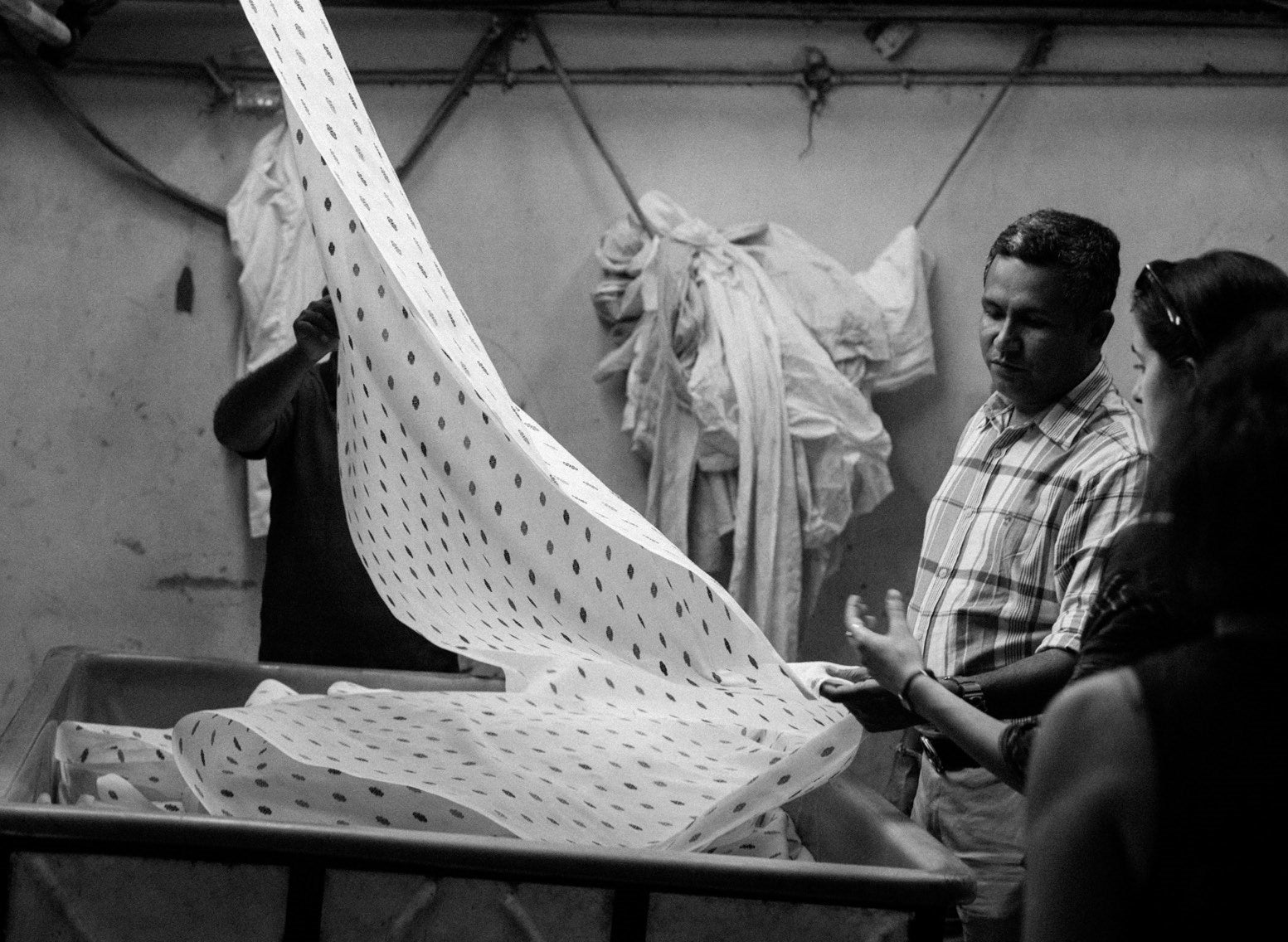Block
Printing
Block printing is a centuries-old craft. Though it might be the simplest and slowest of all textile printing methods, it yields some of the most beautiful results.
The technique demands precision and patience: each block is skilfully hand carved then carefully, laboriously, lined up by eye upon the fabric. It is these human processes that result, inevitably, in slight irregularities. A machine-printed fabric might, by contrast, be perfectly executed, yet it is somehow always a little flat, lacking the inherent liveliness of a hand printed piece.
Though the roots of the technique date back to ancient civilisations – for millennia people have sought to imprint pattern on cloth – India has long been the epicentre of block printing.
Originally made with natural dyes (madder root for red, rusty iron solution for black and indigo for blue) India’s block printed fabrics were shipped to the Arab world, Indonesia and more latterly to Europe. Over time regional variations developed; Ahmedabad and Baroda became known for their mango patterned saris, Barmer for its red chillies and flower-laden trees, the Kutch district for its complex geometric designs and Jaipur for its small, intricate, floral motifs, known as butis.


While the use of dyes has progressed, the process of block printing remains much the same. First the block must be made. Traditionally the block is created from pearwood, sycamore or teak.
The design is then drawn or transferred (using lampblack or oil) onto the block’s surface. With a tool kit made up of miniature chisels, hammers and drills the block carver removes the negative space in the design. Precision is paramount since an ornate design – with many colours – might require multiple blocks that must each fit perfectly within the imprint of the first. After they are carved the blocks are soaked in mustard oil for up to a week to ensure the wood doesn’t crack. Tiny holes are drilled through the blocks, allowing the wood to breathe and to give the block longevity – the studios we work in Jaipur have blocks dating back fifty years.


The block printer begins by marking on the length of cloth, with a piece of chalk and ruler, where the first impressions of the block should be applied.
Then he dips the block in the colour and finally presses it firmly and steadily onto the cloth, ensuring a good impression by tapping it smartly on the back with his hand, twice.
Each block must be carefully lined up next to the one before – for this reason the blocks are cut at a slight angle, so that the edge is visible. It can take as many as 300 impressions to produce one metre of cloth. The print studios we work with are immensely proud of India’s block printing heritage and it is our privilege to be able to work alongside them and to learn from their experience.
